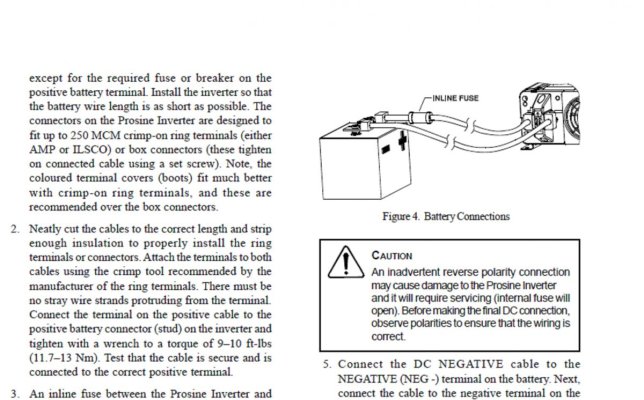I know I said I was done, but here's one more note. This discussion started with a drawing of an inverter wired to a battery bank with a fuse and no switch. I gave several reasons to install a switch, as has Ron, but was still ask "why add a switch if the inverter manufacturer doesn't recommend it". If those reasons aren't good enough, this one should be. Truth is, all marine rated inverter manufacturers do require one. Here's why.
ABYC E-11.6.1.2.1 States " A battery switch shall be installed in the positive conductor(s) from each battery or battery bank with a CCA rating greater than 800 amps or 100Ah if CCA is unavailable".
Every marine rated inverter I've installed somewhere in the installation instructions says the inverter must be installed in such a way as to meet ABYC recommendations and I've never installed a marine rated inverter with a battery bank smaller than 100AH.
So, if ABYC says it MUST be done, and the inv manufacturer says you have to follow ABYC guidelines, then the IM is requiring a battery switch. Yes, it could be the same switch that is used for the house loads, but I'd rather not have to work on the inverter in the dark while the beer and ice cream get warm.............
And by the way, this also pretty much locks you into having to install a switch in every starting circuit, unless you have a starting battery smaller than most group 27 batteries. They (ABYC) do not require a fuse in a dedicated starter circuit, nor have I seen anyone say you should.

